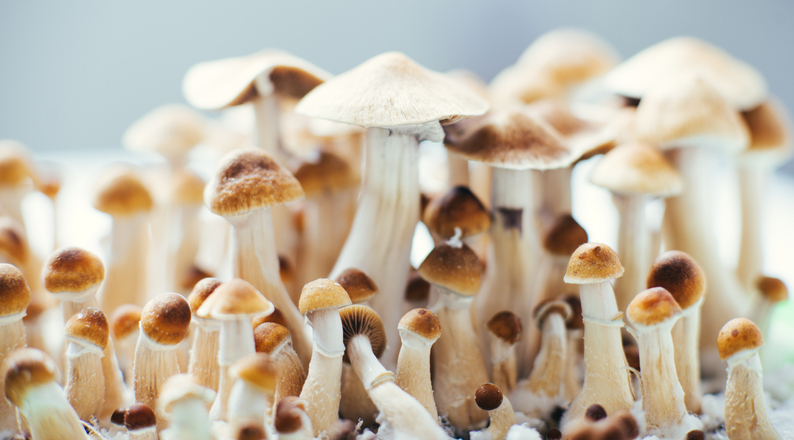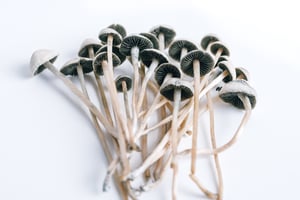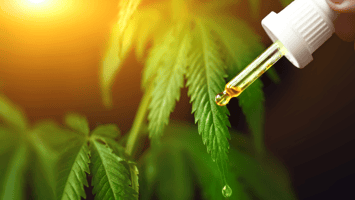Broughton CEO, Chris Allen, looks at the emerging field of psychedelic pharmaceutical drug development and shares some of the best articles he read in 2022.
The Future of Psychedelic Medicines and Mental Health
Pharmaceuticals

Jun 20, 2023 | Published by Alberto Sainz
Pharmaceuticals, Psychedelics
Can psychedelic substances treat mental health-related conditions?
The medical properties of psychedelics have their roots in the traditions and rituals of indigenous cultures and have been used for hundreds of years. From a Western medicine perspective, research points to the potential therapeutic benefit of these substances to help alleviate mental health-related conditions and the ability to improve psychological well-being.
As medical knowledge of psychedelic substances increases due to advances in neurosciences and psychopharmacology, researchers are gaining a greater understanding of how psychedelic substances work in the brain. Psychedelics are known to promote brain plasticity in a similar way as current antidepressants do, which effects are related to changes in both the brain-derived neurotrophic factor (BDNF) and serotonin levels in the brain (Kwan et al., 2022; Moliner et al., 2023; Thompson, 2023). In fact, psychedelics target the specific serotonin receptors in the brain to generate the psychedelic subjective effects associated with psychedelic substances (Kwan et al., 2022). As serotonin receptors play an essential role in mood and psychotic disorders, psychedelics can potentially provide treatment strategies for mental health-related conditions.
Research on the therapeutic properties of psychedelics shows potential benefits for the improvement of several disorders, including those related to substance abuse, anxiety, depression, and bipolar disorder, as well as eating and personality disorders (Ledwos et al., 2023; Roth & Gumpper, 2023; Urban et al., 2023). Psychological research already shows that these substances improve the symptoms of many psychological conditions and can also treat them.
It’s important to note that the effects of psychedelics are not limited to their therapeutic potential. Research on the psychedelic effects in healthy subjects indicates improvements in cognitive and emotional functions, psychological well-being, and quality of life (Jiménez-Garrido et al., 2020; Orłowski et al., 2022; Teixeira et al., 2022). Interestingly, the results that Western medicine is recording from the research on these substances correlate with the properties attributed by those indigenous cultures who have used them for centuries.
These potential therapeutic effects associated with psychedelics are usually reinforced when either adequate spiritual guidance (in the case of the approach of indigenous cultures) or psychotherapy (in the case of Western medicine) is provided together with the psychedelic experience (Cavarra et al., 2022; Schenberg, 2018).
The subjective effects
Psychedelics can induce powerful introspective experiences that significantly impact users’ perceptions of their lives and problems. Users’ experiences usually refer to “ego dissolution,” “higher consciousness of important things,” “improved ability to understand others,” “greater acceptance of oneself and life events,” and other similar processes related to personal growth (Orłowski et al., 2022). These experiences can be joyful, but they can also be overwhelming, sometimes being hard to experience, process, and understand.
While negative experiences cannot be predicted, using psychedelics in an appropriate environment, with the proper preparation and guidance, can reduce the risk of bad experiences. This is usually referred to as the set and setting and is typically controlled by a guide, which can be a shaman, a psychotherapist, or a combination of both. The role of the guide is to prepare the user for the experience, to be present, and to help with interpretation once the experience is finished so that patients can fully understand the psychedelic experience. To follow safety measures, guides are often accompanied by medical staff such as psychiatrists and nurses, and this is an essential requirement in many clinical practices.
Routes of administration
The route of administration will depend on its availability and the type of effect or outcome desired. Routes of administration usually include oral (psilocybin and MDMA), inhaled (DMT), and nasal (ketamine). However, in clinical settings, intravenous and intramuscular administration are also used
Oral administration usually has slow-acting and long-lasting psychedelic effects, which gives the user a more extended psychedelic experience with higher chances to process, learn and integrate the experience while it’s happening. This is typically the case with Ayahuasca rituals or psilocybin/MDMA-assisted therapy. Depending on the substance and dose, psychedelic experiences usually last 3 to 12 hours.
Nasal, inhaled, or injected routes of administration usually have fast-acting and short-lasting effects, sometimes with intense experiences where the user has fewer chances to process, learn and integrate the experience while it’s happening. This is typically the case of smoked 5-Meo-DMT rituals, smoked salvia divinorum, or ketamine assisted-therapy. Depending on the substance and dose, psychedelic experiences usually last five minutes to one hour.
Contemporary routes of administration of psychedelics are almost the same as the ones used by indigenous cultures. Clinical practice and research already offer some alternatives, but new options are still to be explored, and vaporizers might become more common.
Clinical trials
Globally there are currently around 70 clinical trials testing psychedelics for specific medical conditions. Over 50 percent of these clinical trials test MDMA and psilocybin for depression and post-traumatic stress disorders. Other clinical trials include LSD, Ayahuasca, salvinorin-A, and other plants/molecules for treating substance abuse, mood, and anxiety disorders.
Only three clinical trials are at phase three, and only Esketamine (structurally similar to ketamine) has been approved for medical use. Since 2019, Esketamine has been approved for use in patients with treatment-resistant depression. It is important to note, that ketamine was approved as an anaesthetic during the 1970s, and it has been used off-label to treat mood disorders for several decades. Other compounds like MDMA and psylocibin are allowed in expanded access or compassionate use in countries like United States, Canada, Israel, and Switzerland. Furthermore, on 1st July 2023, Australia will be the first country to approve the use of MDMA and psylocibin for medical purposes.
Medical use and practice
Ketamine is already used to treat major depression, MDMA is about to be approved for post-traumatic stress disorder (PTSD), and psilocybin and other psychedelic drugs are already quite advanced in clinical trials. It is just a matter of time before these drugs are approved for several mental health-related conditions. It should be expected that the medical use of these drugs will be highly regulated, like benzodiazepines or opioids, as they are controlled substances.
Once approved, regulation will determine whether these drugs are available via public health systems, if private health insurance companies will cover the treatments, and whether they must be consumed in a controlled environment or if patients can take them at home.
The requirements for these controlled environments will probably be highly regulated. It currently looks likely that there will be two main approaches. The first relates to typical clinical sites or hospitals where patients are treated in a clinical environment that would look like a cross between a department in a psychiatric hospital and a psychology practice. These sites might need the capacity for patients to stay for a period of time to be treated over several days.
The other option is well-being sites with medical licenses, which would combine a well-being centre and a clinical trials site. These would be clinically regulated multi-treatment sites where patients can do their treatments in a less clinical environment but probably under the same regulatory framework. Current Ketamine clinics are already a mix of these two approaches. Although current sites are not regulated because the area of psychedelic treatment is still extremely new, they usually operate under the same regulations as private clinics.
Conclusion
Given the interest, investment, and number of clinical trials in progress, the indication is that psychedelic substances will radically change the treatment options for people with severe mental health disorders in the coming years. As with all new areas of medicine, it is essential that governments act quickly to put appropriate regulations in place to protect the public and allow the sector to develop in a way that encourages investment, research, and new drug development. Accelerating the establishment of this exciting new area of neurosciences and psychopharmacology has the potential to improve the quality of life for millions of mental health sufferers.
Dr Nveed Chaudhary, Broughton’s Chief Scientific & Regulatory Officer, will be attending the Psych Symposium on 6th July in London, to arrange a meeting with him at the event or to learn more about working with Broughton, visit our website.
References:
Cavarra, M., Falzone, A., Ramaekers, J. G., Kuypers, K. P. C., & Mento, C. (2022). Psychedelic-Assisted Psychotherapy—A Systematic Review of Associated Psychological Interventions. Frontiers in Psychology, 13. https://www.frontiersin.org/articles/10.3389/fpsyg.2022.887255
Jiménez-Garrido, D. F., Gómez-Sousa, M., Ona, G., Dos Santos, R. G., Hallak, J. E. C., Alcázar-Córcoles, M. Á., & Bouso, J. C. (2020). Effects of ayahuasca on mental health and quality of life in naïve users: A longitudinal and cross-sectional study combination. Scientific Reports, 10(1), 4075. https://doi.org/10.1038/s41598-020-61169-x
Kwan, A. C., Olson, D. E., Preller, K. H., & Roth, B. L. (2022). The neural basis of psychedelic action. Nature Neuroscience, 25(11), 1407–1419. https://doi.org/10.1038/s41593-022-01177-4
Ledwos, N., Rodas, J. D., Husain, M. I., Feusner, J. D., & Castle, D. J. (2023). Therapeutic uses of psychedelics for eating disorders and body dysmorphic disorder. Journal of Psychopharmacology (Oxford, England), 37(1), 3–13. https://doi.org/10.1177/02698811221140009
Moliner, R., Girych, M., Brunello, C. A., Kovaleva, V., Biojone, C., Enkavi, G., Antenucci, L., Kot, E. F., Goncharuk, S. A., Kaurinkoski, K., Kuutti, M., Fred, S. M., Elsilä, L. V., Sakson, S., Cannarozzo, C., Diniz, C. R. A. F., Seiffert, N., Rubiolo, A., Haapaniemi, H., … Castrén, E. (2023). Psychedelics promote plasticity by directly binding to BDNF receptor TrkB. Nature Neuroscience, 26(6), 1032–1041. https://doi.org/10.1038/s41593-023-01316-5
Orłowski, P., Ruban, A., Szczypiński, J., Hobot, J., Bielecki, M., & Bola, M. (2022). Naturalistic use of psychedelics is related to emotional reactivity and self-consciousness: The mediating role of ego-dissolution and mystical experiences. Journal of Psychopharmacology (Oxford, England), 36(8), 987–1000. https://doi.org/10.1177/02698811221089034
Roth, B. L., & Gumpper, R. H. (2023). Psychedelics as Transformative Therapeutics. American Journal of Psychiatry, 180(5), 340–347. https://doi.org/10.1176/appi.ajp.20230172
Schenberg, E. E. (2018). Psychedelic-Assisted Psychotherapy: A Paradigm Shift in Psychiatric Research and Development. Frontiers in Pharmacology, 9. https://www.frontiersin.org/articles/10.3389/fphar.2018.00733
Teixeira, P. J., Johnson, M. W., Timmermann, C., Watts, R., Erritzoe, D., Douglass, H., Kettner, H., & Carhart-Harris, R. L. (2022). Psychedelics and health behaviour change. Journal of Psychopharmacology (Oxford, England), 36(1), 12–19. https://doi.org/10.1177/02698811211008554
Thompson, S. M. (2023). Plasticity of synapses and reward circuit function in the genesis and treatment of depression. Neuropsychopharmacology: Official Publication of the American College of Neuropsychopharmacology, 48(1), 90–103. https://doi.org/10.1038/s41386-022-01422-1
Urban, M. M., Stingl, M. R., & Meinhardt, M. W. (2023). Mini-review: The neurobiology of treating substance use disorders with classical psychedelics. Frontiers in Neuroscience, 17, 1156319. https://doi.org/10.3389/fnins.2023.1156319


